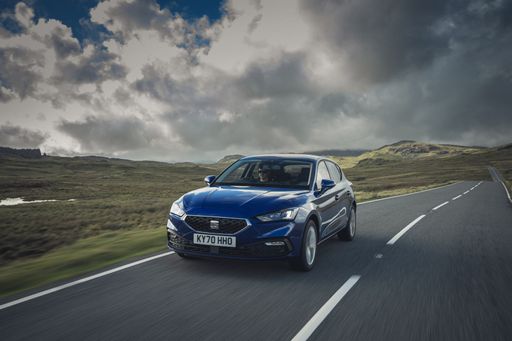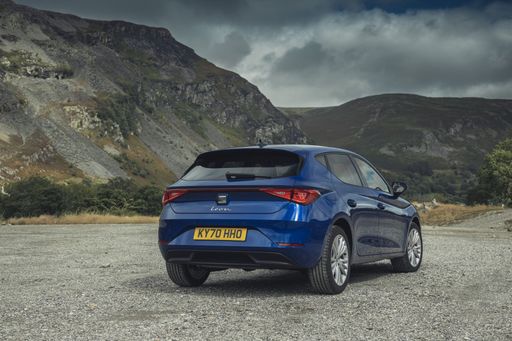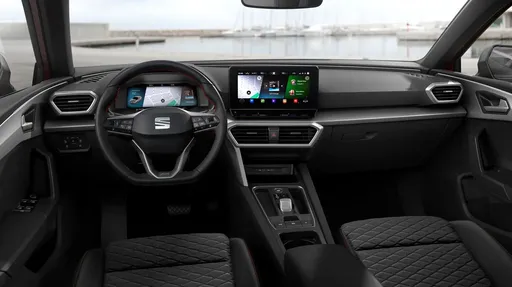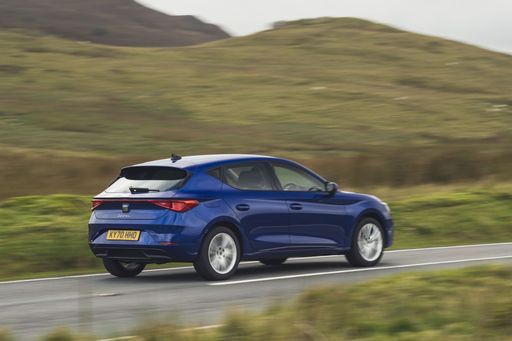Alfa Romeo Junior vs SEAT Leon – Differences & prices compared
Both models have their strengths – but which one suits you more?
Compare performance, efficiency, price and space directly: Alfa Romeo Junior or SEAT Leon?
Costs and Efficiency:
Looking at overall running costs, both models reveal some interesting differences in everyday economy.
SEAT Leon has a slight advantage in terms of price – it starts at 24500 £, while the Alfa Romeo Junior costs 25700 £. That’s a price difference of around 1217 £.
Fuel consumption also shows a difference: SEAT Leon manages with 0.30 L and is therefore decisively more efficient than the Alfa Romeo Junior with 4.80 L. The difference is about 4.50 L per 100 km.
As for range, the Alfa Romeo Junior performs decisively better – achieving up to 410 km, about 276 km more than the SEAT Leon.
Engine and Performance:
Under the bonnet, it becomes clear which model is tuned for sportiness and which one takes the lead when you hit the accelerator.
When it comes to engine power, the Alfa Romeo Junior has a hardly perceptible edge – offering 280 HP compared to 272 HP. That’s roughly 8 HP more horsepower.
In acceleration from 0 to 100 km/h, the Alfa Romeo Junior is clearly perceptible quicker – completing the sprint in 5.90 s, while the SEAT Leon takes 7.70 s. That’s about 1.80 s faster.
In terms of top speed, the SEAT Leon performs slight better – reaching 220 km/h, while the Alfa Romeo Junior tops out at 206 km/h. The difference is around 14 km/h.
There’s also a difference in torque: SEAT Leon pulls hardly perceptible stronger with 360 Nm compared to 345 Nm. That’s about 15 Nm difference.
Space and Everyday Use:
Whether family car or daily driver – which one offers more room, flexibility and comfort?
Both vehicles offer seating for 5 people.
In curb weight, SEAT Leon is barely noticeable lighter – 1344 kg compared to 1380 kg. The difference is around 36 kg.
In terms of boot space, the Alfa Romeo Junior offers minimal more room – 415 L compared to 380 L. That’s a difference of about 35 L.
In maximum load capacity, the SEAT Leon performs slight better – up to 1301 L, which is about 21 L more than the Alfa Romeo Junior.
When it comes to payload, SEAT Leon to a small extent takes the win – 521 kg compared to 420 kg. That’s a difference of about 101 kg.
Who wins the race?
The SEAT Leon proves to be outperforms in nearly all aspects and therefore becomes our DriveDuel Champion!
SEAT Leon is the better all-rounder in this comparison.
 @ SEAT S.A. / SEAT Media Center
@ SEAT S.A. / SEAT Media Center
SEAT Leon
Alfa Romeo Junior
The Alfa Romeo Junior captures the essence of Italian design with its sleek lines and compact dimensions, making it an icon of elegance and performance. With a spirited driving experience and a charming retro aesthetic, it appeals to enthusiasts and casual drivers alike. This delightful car embodies the brand's rich heritage while remaining a fun and engaging option for those seeking a unique automotive experience.
details @ Alfa Romeo / Stellantis Media
@ Alfa Romeo / Stellantis Media
 @ Alfa Romeo / Stellantis Media
@ Alfa Romeo / Stellantis Media
 @ Alfa Romeo / Stellantis Media
@ Alfa Romeo / Stellantis Media
SEAT Leon
The SEAT Leon impresses with its dynamic design and sporty edge, making it a standout choice in its class. Its interior is characterised by a modern, driver-focused cockpit that combines functionality with an emphasis on comfort. The car delivers a responsive driving experience, thanks to its advanced engineering and agile handling capabilities.
details @ SEAT S.A. / SEAT Media Center
@ SEAT S.A. / SEAT Media Center
 @ SEAT S.A. / SEAT Media Center
@ SEAT S.A. / SEAT Media Center
 @ SEAT S.A. / SEAT Media Center
@ SEAT S.A. / SEAT Media Center
 @ SEAT S.A. / SEAT Media Center
@ SEAT S.A. / SEAT Media Center
 @ Alfa Romeo / Stellantis Media
@ Alfa Romeo / Stellantis Media
|
 @ SEAT S.A. / SEAT Media Center
@ SEAT S.A. / SEAT Media Center
|
|
|
|
Costs and Consumption |
|
|---|---|
|
Price
25700 - 41600 £
|
Price
24500 - 36400 £
|
|
Consumption L/100km
4.8 - 5.4 L
|
Consumption L/100km
0.3 - 5.7 L
|
|
Consumption kWh/100km
15.1 - 17.5 kWh
|
Consumption kWh/100km
-
|
|
Electric Range
344 - 410 km
|
Electric Range
133 - 134 km
|
|
Battery Capacity
0.4 - 51 kWh
|
Battery Capacity
19.70 kWh
|
|
co2
0 - 119 g/km
|
co2
7 - 129 g/km
|
|
Fuel tank capacity
44 - 45 L
|
Fuel tank capacity
40 - 45 L
|
Dimensions and Body |
|
|---|---|
|
Body Type
SUV
|
Body Type
Hatchback
|
|
Seats
5
|
Seats
5
|
|
Doors
5
|
Doors
5
|
|
Curb weight
1380 - 1689 kg
|
Curb weight
1344 - 1670 kg
|
|
Trunk capacity
340 - 415 L
|
Trunk capacity
270 - 380 L
|
|
Length
4173 mm
|
Length
4368 mm
|
|
Width
1781 mm
|
Width
1799 mm
|
|
Height
1505 - 1538 mm
|
Height
1442 - 1460 mm
|
|
Max trunk capacity
1205 - 1280 L
|
Max trunk capacity
1187 - 1301 L
|
|
Payload
390 - 420 kg
|
Payload
460 - 521 kg
|
Engine and Performance |
|
|---|---|
|
Engine Type
Electric, Petrol MHEV
|
Engine Type
Petrol, Petrol MHEV, Diesel, Plugin Hybrid
|
|
Transmission
Automatic
|
Transmission
Manuel, Automatic
|
|
Transmission Detail
Dual-Clutch Automatic, Reduction Gearbox
|
Transmission Detail
Manual Gearbox, Dual-Clutch Automatic
|
|
Drive Type
Front-Wheel Drive, All-Wheel Drive
|
Drive Type
Front-Wheel Drive
|
|
Power HP
136 - 280 HP
|
Power HP
110 - 272 HP
|
|
Acceleration 0-100km/h
5.9 - 9.1 s
|
Acceleration 0-100km/h
7.7 - 10.5 s
|
|
Max Speed
150 - 206 km/h
|
Max Speed
197 - 220 km/h
|
|
Torque
230 - 345 Nm
|
Torque
220 - 360 Nm
|
|
Number of Cylinders
3
|
Number of Cylinders
4
|
|
Power kW
100 - 207 kW
|
Power kW
85 - 200 kW
|
|
Engine capacity
1199 cm3
|
Engine capacity
1498 - 1968 cm3
|
General |
|
|---|---|
|
Model Year
2024 - 2025
|
Model Year
2024 - 2025
|
|
CO2 Efficiency Class
A, C, D
|
CO2 Efficiency Class
D, B
|
|
Brand
Alfa Romeo
|
Brand
SEAT
|
What drive types are available for the Alfa Romeo Junior?
Available configurations include Front-Wheel Drive or All-Wheel Drive.
The prices and data displayed are estimates based on German list prices and may vary by country. This information is not legally binding.
